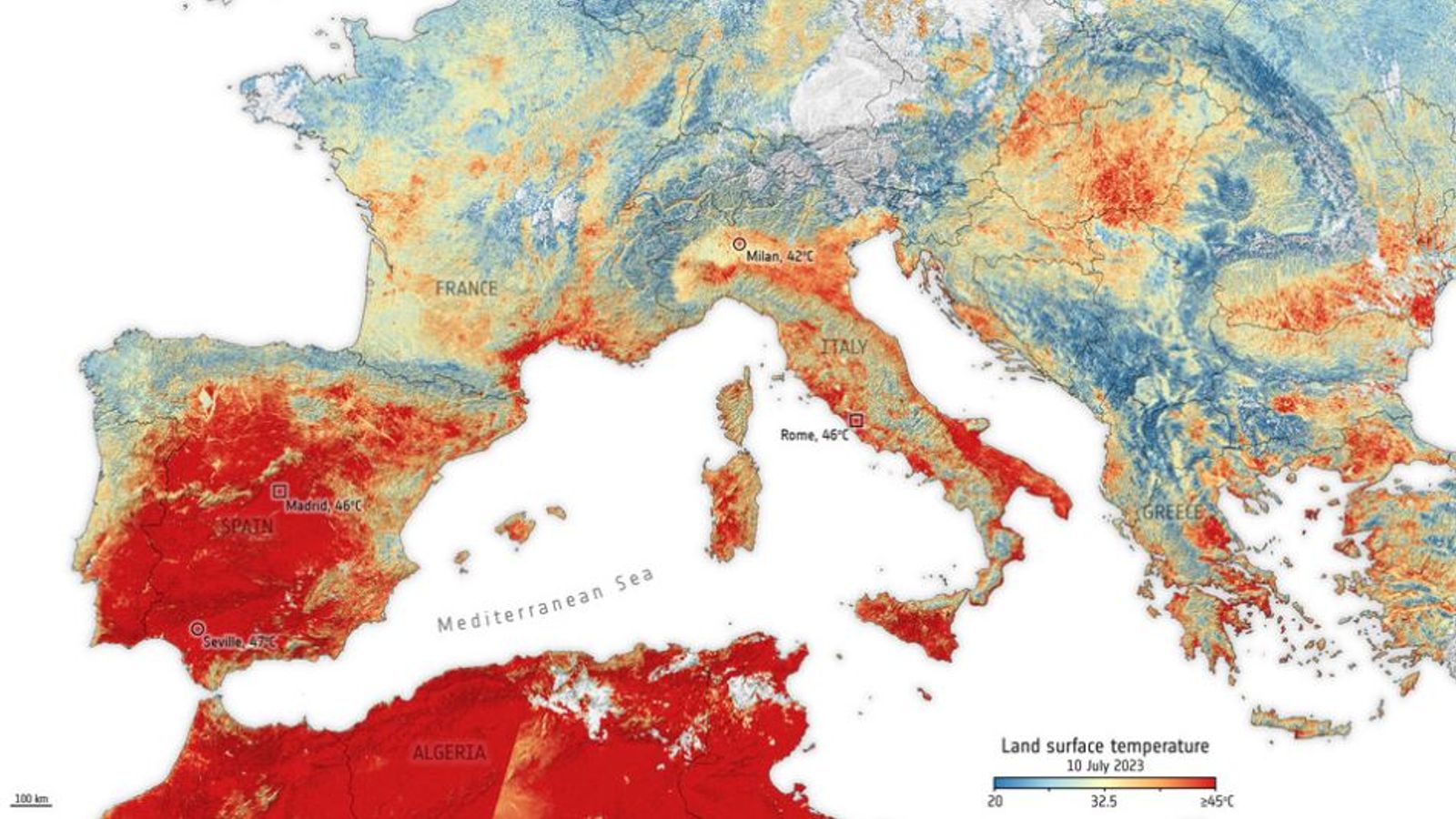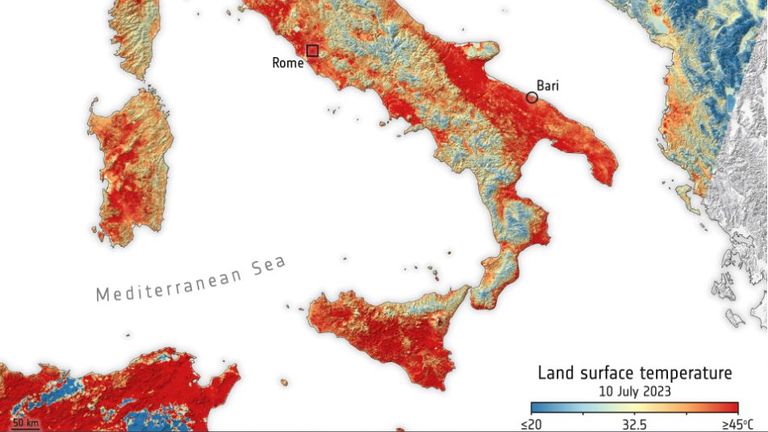The heatwave affecting southern Europe has been building for months. And it’s about to get much worse.
Temperatures have been consistently above 40C since mid-April in many areas.
Europe heatwave – latest: Continent could have hottest day ever
But on the Mediterranean islands of Sicily and Sardinia they’re expected to climb to 48C in the coming days, and could even break the continent‘s record of 48.8C set in August 2021.
And those are just air temperatures. New data shows the ground is even hotter.
The European Space Agency’s heat-sensing satellite Copernicus detected land surface temperatures have already exceeded 45C across large areas of Italy (shown as dark red on ESA’s animation).
Along the eastern slopes of Mount Etna, the volcano on Sicily, the sun-baked earth passed 50C on 9 and 10 July.
And that was in the late morning. The temperature would have been even higher in the afternoon – and likely hotter still as the heatwave has intensified through the week.
Read more: Why is Europe being hit by the Cerberus heatwave and when will it end?
The ground temperature matters.
In rural areas it raises the risk of wildfires because the vegetation dries out faster.
And in urban areas, concrete, brick and road surfaces retain the heat overnight so the air doesn’t cool as much as in the surrounding countryside.
It’s called the heat island effect and it raises the risk of vulnerable people dying.
So why is the heat so intense?
Heatwaves are natural events of course. In this instance warm air has pushed north from the Sahara in Africa.
But heatwaves are becoming more common, they’re lasting longer and peak temperatures are getting higher.
Read more:
Cerberus heatwave: Man ‘collapses and dies’ and people faint
Long-lasting heatwave grips continent
Extreme heat killed more than 60,000 people in Europe last year
That’s the effect of the rising background temperature from climate change, up around 1.2C since pre-industrial times, and extreme weather patterns becoming locked in place.
Higher-than-normal water temperatures in the Mediterranean are also pumping additional heat into the surrounding air, like an enormous radiator.
This year is on track to be a scorcher. Preliminary data from satellites suggests the Earth had its hottest three days on record earlier this month.
Click to subscribe to ClimateCast with Tom Heap wherever you get your podcasts
The impact of the El Nino weather pattern in the Pacific, which results in extra heat being released by the ocean into the atmosphere, has yet to ripple around the planet.
But it will over the coming months and it’s expected to temporarily add another 0.2C to the global background temperature.
This year is hot, but 2024 could be hotter still.



